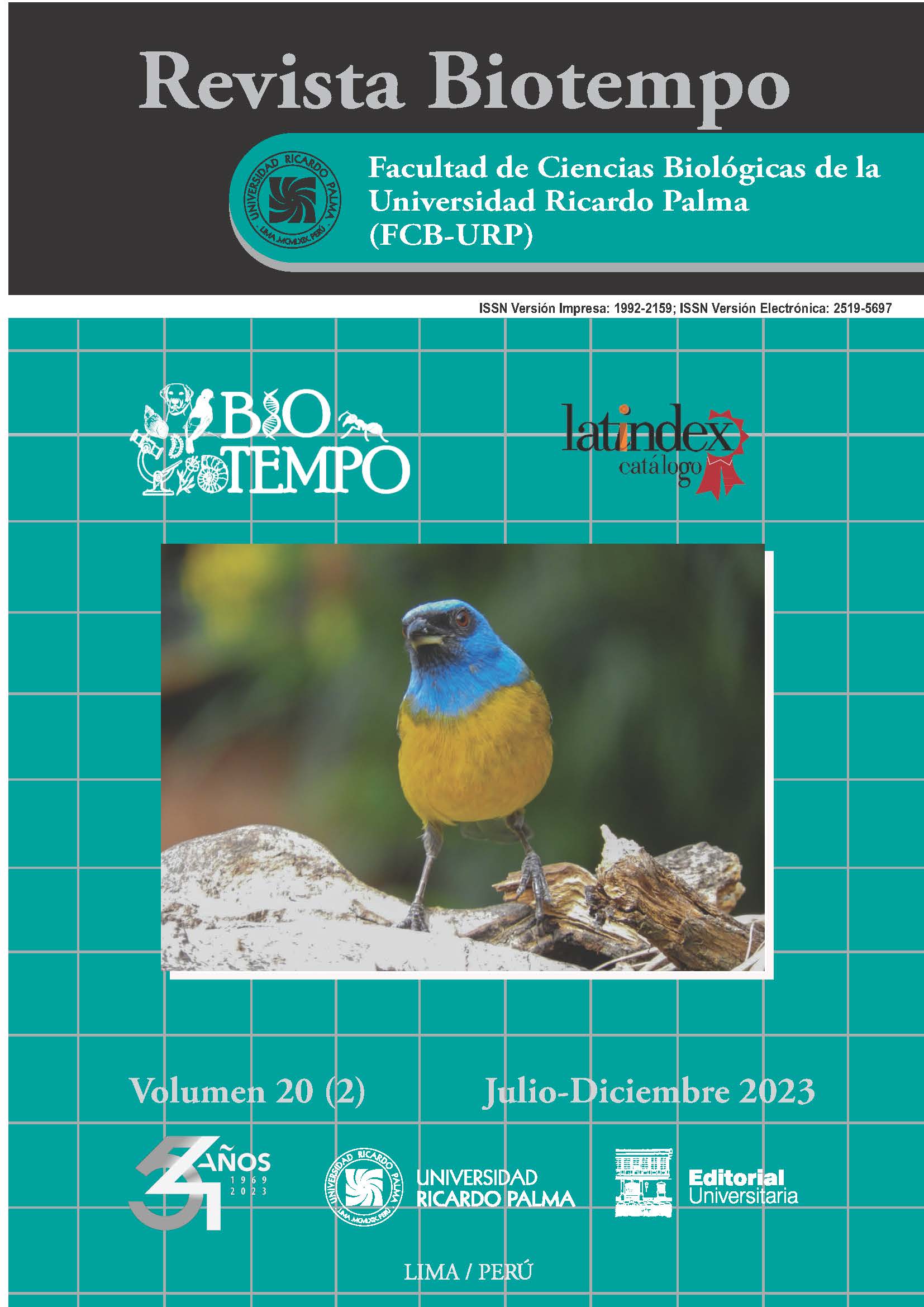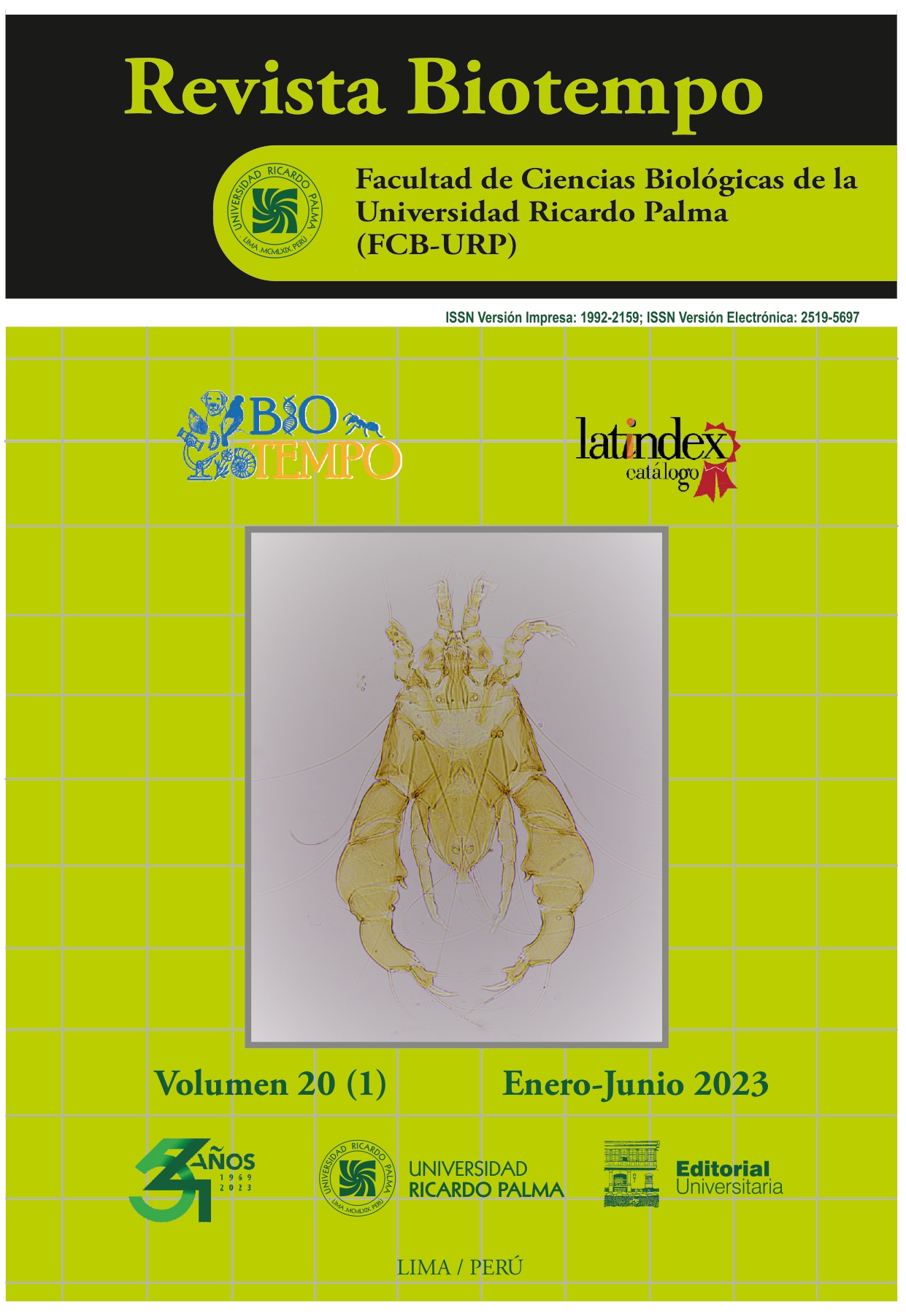Capacidad antioxidante de la pulpa de Vasconcellea candicans “Mito”
DOI:
https://doi.org/10.31381/biotempo.v20i2.5872Palabras clave:
"mito", Vasconcellea candicans, polifenolesa candicans, fruto maduro e inmaduro, capacidad antioxidanteo, IC50Resumen
Debido al potencial antioxidante de los frutos del “mito” (Vasconcellea candicans (A. Gray) A. DC 1864) y la posibilidad de ser utilizado como aditivo natural en la industria de alimentos, planteamos como objetivo evaluar la concentración de polifenoles, la capacidad antioxidante y la concentración media inhibitoria (IC50) de la pulpa de este fruto en dos estados de madurez y en dos extractos, acuoso y etanólico al 70% (etanol 70: agua 30). Determinamos la concentración de polifenoles totales, la capacidad antioxidante como % de Captura radicales libres y el coeficiente de inhibición (IC50). Nuestros resultados indican que el extracto acuoso de la pulpa de los frutos de mito inmaduros tiene la mayor concentración de polifenoles totales, mientras que la capacidad antioxidante fue mayor en los extractos etanólicos, siendo éstos, mayores que los encontrados en papaya. El IC50 fue mayor en el extracto etanólico maduro de mito vs. papaya. No encontramos correlación entre polifenoles totales, capacidad antioxidante y el IC50. Concluimos que el estado de madurez influye en la concentración de los polifenoles totales, mientras que la captación de radicales libres y coeficiente de IC50, varía según el tipo de extractante utilizado, demostrándose que la pulpa de “mito” es una fuente promisoria para utilizar como antioxidante natural.










